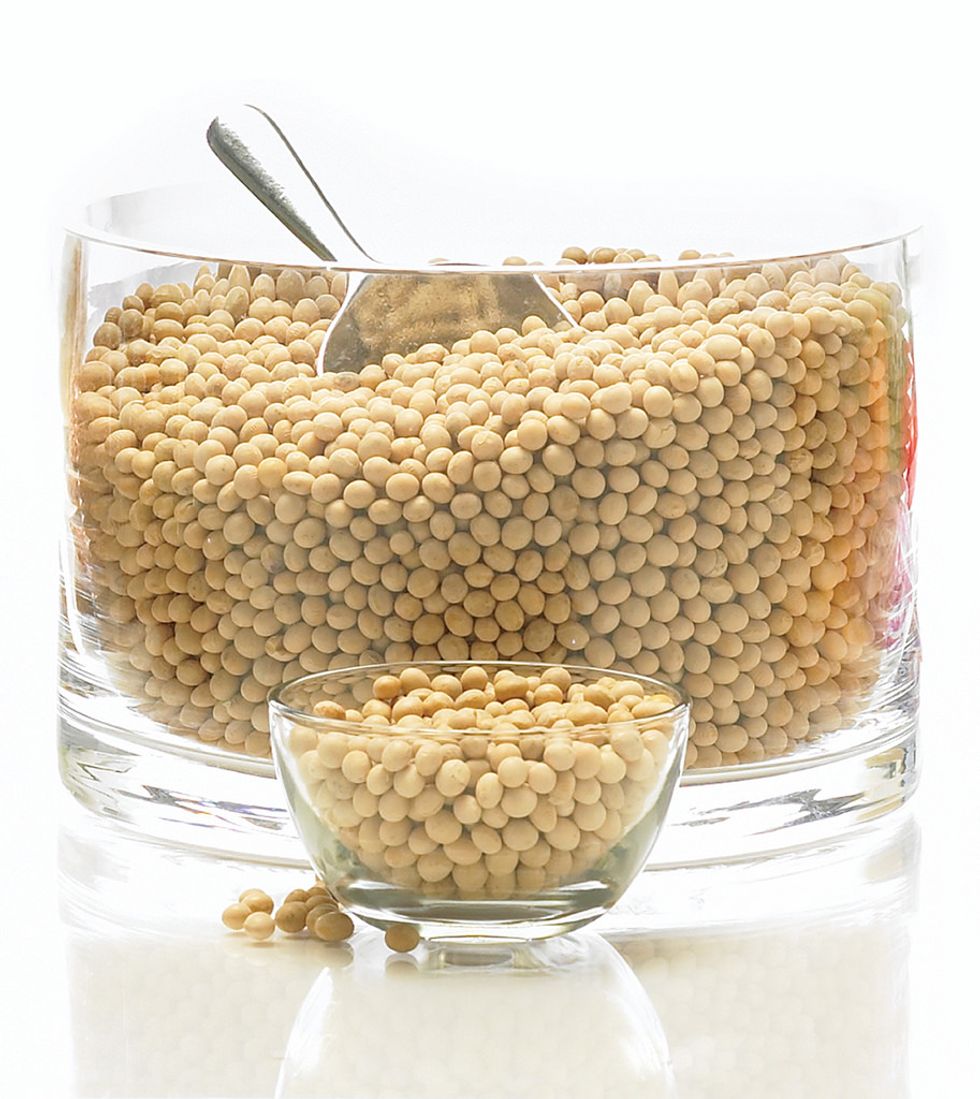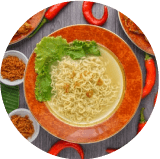
From poor food to real superfood of the new millennium. Soya, a typical Asian legume, has now entered most Western cuisines, but doubts and questions have arisen around it. Let's try to answer the main ones
For centuries it has been produced and consumed only in China. From there it then passed to Japan and then, in 1700 it arrived in Europe, but its golden moment was experienced with the arrival of the third millennium. In fact, for a couple of decades, soy has conquered Westerners, who consider it a real superfood, and has become one of the most popular legumes in the world. This notoriety has not only brought praise, however, but has also raised many questions about its safety, health effects and nutritional value. Let's try to understand more.
Is it really the best plant-based alternative to meat?
Soy is the vegetable product that, in protein terms, most closely resembles meat. In fact, it is characterized both by the high quantity of proteins (36%) and by their quality, since they are the most similar to those of foods of animal origin. The extra advantage of soy is that it provides phytosterols, lipids that reduce the absorption of cholesterol taken with food, lower the "bad" one and increase the "good" one.
That's why soy is a great food for everyone and not just vegetarians. Nutritionists recommend consuming it instead of one of the four weekly portions of meat, to reduce consumption and to vary your diet, and with the certainty of introducing the necessary amount of protein in a balanced diet. Without forgetting that even the legumes of our tradition, such as beans, chickpeas and lentils, are an excellent source of vegetable protein and with much lower prices than soy.
Is it really a female friendly food?
It all stems from the observation that Asian women are less affected by osteoporosis and cardiovascular problems (especially in menopause) than Westerners. Looking for the cause, it was hypothesized that this positive predisposition was also to be connected to soy, both because it is very present in the oriental diet and because it is rich in isoflavones, which function as plant hormones and which can activate the estrogen receptors of the human body. . This is why these isoflavones are often used as a natural alternative to medications to relieve menopausal symptoms and reduce the risk of bone loss in older women.
In reality, the studies conducted in the last 15 years have given controversial results: it does not seem that the consumption of soy has long-term positive effects on Westerners, accustomed as they are to legumes that contain few hormones. On the other hand, it has been found that isoflavones are effective in reducing the frequency of menopausal hot flashes but it seems that they do not serve to fight osteoporosis or to lower the risk of hormone-dependent tumors. Indeed, according to some studies, it emerges that the risks outweigh the potential benefits since they are still endocrine disruptors, ie substances that alter the functionality of the endocrine system. As such, they should not be taken by women undergoing hormone therapy (such as the birth control pill) and especially those who have had breast cancer.
Is it really at GMO risk?
Soy was the first transgenic crop in the world and still remains the main one today: over 70% of the soy produced on the planet is GMO. However, the marketing of GM soybeans is prohibited throughout the European Union, but a tolerance threshold of 0.9% is allowed, which must be declared on the labels. So, if the package does not say "contains genetically modified organisms" then either it does not contain GM soy or it is below 0.9%. This is what often happens with soy, as it is present (usually as lecithin) in many foods whose label simply states the presence of a 'vegetable protein' or an emulsifier (E322). The advice is to check the origin of the soy (if it is Italian or European it is safe), prefer the organic one (in organic farming, GMOs are prohibited) or check that it is specified that the product is "GMO free" because it comes from seeds and crops control yourself.
In reality, the GMO issue is complex: in the United States and South America, GMO soy is allowed and regularly consumed, and at the moment there are no studies that have shown negative effects on the health of the population. The doubts, if anything, concern the consequences on the environment, but everything still needs to be fully understood.
Is it really that expensive?
The cheapest and most effective way to introduce soy into your diet is to choose soybeans or frozen edamame soy, whose prices are in line with those of other legumes. On the other hand, soy-based products (such as hamburgers, tofu, stews) have two limits: they are expensive (often double the cost of beef) and often contain many additives, which worsen their nutritional profile. In fact, they are generally obtained from soy proteins, that is, from the extruded product obtained from soy flour with different methods (such as coagulation or centrifuge), rehydrated, flavored and processed to make it look like meat. However, this process has some disadvantages: it depletes soy and requires the use of sodium, fats and additives. Therefore, it is better to check the list of ingredients and verify both the additives present and the real soy content, which is often very low (6-8% of the total weight of the product). Better to prefer products where soy appears among the first ingredients and where the percentage is higher.
For centuries it has been produced and consumed only in China. From there it then passed to Japan and then, in 1700 it arrived in Europe but its golden moment was experienced with the arrival of the third millennium. In fact, for a couple of decades, soy has conquered Westerners, who consider it a real superfood, and has become one of the most popular legumes in the world. This notoriety has not only brought praise, however, but has also raised many questions about its safety, health effects and nutritional value. Let's try to understand more.
Is it really the best plant-based alternative to meat?
Soy is the vegetable product that, in protein terms, most closely resembles meat. In fact, it is characterized both by the high quantity of proteins (36%) and by their quality, since they are the most similar to those of foods of animal origin. The extra advantage of soy is that it provides phytosterols, lipids that reduce the absorption of cholesterol taken with food, lower the "bad" one and increase the "good" one.
That's why soy is a great food for everyone and not just vegetarians. Nutritionists recommend consuming it instead of one of the four weekly portions of meat, to reduce consumption and to vary your diet, and with the certainty of introducing the necessary amount of protein in a balanced diet. Without forgetting that even the legumes of our tradition, such as beans, chickpeas and lentils, are an excellent source of vegetable protein and with much lower prices than soy.
Is it really a female friendly food?
It all stems from the observation that Asian women are less affected by osteoporosis and cardiovascular problems (especially in menopause) than Westerners. Looking for the cause, it was hypothesized that this positive predisposition was also to be connected to soy, both because it is very present in the oriental diet and because it is rich in isoflavones, which function as plant hormones and which can activate the estrogen receptors of the human body. . This is why these isoflavones are often used as a natural alternative to medications to relieve menopause symptoms and reduce the risk of bone loss in older women.
In reality, the studies conducted in the last 15 years have given controversial results: it does not seem that the consumption of soy has long-term positive effects on Westerners, accustomed as they are to legumes that contain few hormones. On the other hand, it has been found that isoflavones are effective in reducing the frequency of menopausal hot flashes but it seems that they do not serve to fight osteoporosis or to lower the risk of hormone-dependent tumors. Indeed, according to some studies, it emerges that the risks outweigh the potential benefits since they are still endocrine disruptors, ie substances that alter the functionality of the endocrine system. As such, they should not be taken by women undergoing hormone therapy (such as the birth control pill) and especially those who have had breast cancer.
Is it really at risk of GMOs (Genetically Modified Organisms)?
Soy was the first transgenic crop in the world and still remains the main one today: over 70% of the soy produced in the world is GMO. However, the marketing of GM soybeans is prohibited throughout the European Union, but a tolerance threshold of 0.9% is allowed, which must be declared on the labels. So, if the package does not say "contains genetically modified organisms" then either it does not contain GM soy or it is below 0.9%. This is what often happens with soy, since it is present (usually as lecithin) in many foods whose label simply states the presence of a 'vegetable protein' or an emulsifier (E322). The advice is to check the origin of the soy (if it is Italian or European it is safe), prefer the organic one (in organic farming, GMOs are prohibited) or check that it is specified that the product is "GMO free" because it comes from seeds and crops control yourself.
In reality, the GMO issue is complex: in the United States and South America, GMO soy is allowed and regularly consumed, and at the moment there are no studies that have shown negative effects on the health of the population. The doubts, if anything, concern the consequences on the environment, but everything still needs to be fully understood.
Is it really that expensive?
The cheapest and most effective way to introduce soy into your diet is to choose soybeans or frozen edamame soy, whose prices are in line with those of other legumes. On the other hand, soy-based products (such as hamburgers, tofu, stews) have two limits: they are expensive (often double the cost of beef) and often contain many additives, which worsen their nutritional profile. In fact, they are generally obtained from soy proteins, that is, from the extruded product obtained from soy flour with different methods (such as coagulation or centrifuge), rehydrated, flavored and processed in such a way as to make it resemble meat. However, this process has some disadvantages: it depletes soy and requires the use of sodium, fats and additives. Therefore, it is better to check the list of ingredients and verify both the additives present and the real soy content, which is often very low (6-8% of the total weight of the product). Better to prefer products where soy appears among the first ingredients and where the percentage is higher.







